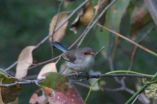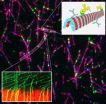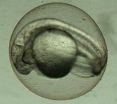(Press-News.org) Australian marine scientists have unearthed evidence of an historic coral collapse in Queensland's Palm Islands following development on the nearby mainland.
Cores taken through the coral reef at Pelorus Island confirm a healthy community of branching Acropora corals flourished for centuries before European settlement of the area, despite frequent floods and cyclone events. Then, between 1920 and 1955, the branching Acropora failed to recover.
Scientists from the ARC Centre of Excellence for Coral Reef Studies at the University of Queensland say the rapid collapse of the coral community is potential evidence of the link between man-made changes in water quality and the loss of corals on the Great Barrier Reef.
It adds weight to evidence that human activity is implicated in the recent loss of up to half of the corals on the Great Barrier Reef, says Professor John Pandolfi of CoECRS and UQ.
The destruction of branching corals coincided with wide-spread land clearing for grazing and agriculture which took place in the nearby Burdekin River catchment in the late 19th Century, causing an increase in the amount of mud and nutrients into the GBR lagoon, says the lead author of a new study on the collapse, Dr George Roff, of CoECRS and UQ.
"Corals have always died from natural events such as floods and cyclones, but historically have shown rapid recovery following disturbance. Our results suggest that the chronic influence of European settlement on the Queensland coastline may have reduced the corals ability to bounce back from these natural disturbances" he says.
The team took cores from dead coral beds on the western side of Pelorus Island and then analysed their coral species composition and their age, using high-precision uranium dating methods pioneered by a team lead by one of the study's co-authors, Jian-xin Zhao at the University of Queensland's Radio Isotope Facility. They then aligned this with records of cyclones, floods and sea surface temperatures over the same period.
"Our results imply … a previously undetected historical collapse in coral communities coinciding with increased sediment and nutrient loading following European settlement of the Queensland coastline," the researchers report in their paper.
"Significantly, this collapse occurred before the onset of the large-scale coral bleaching episodes seen in recent decades, and also before detailed surveys of GBR coral began in the 1980s.
"And, even more significantly, we found no similar collapse occurring at any time in the previous 1700 years covered by our cores. Throughout this period the branching corals continued to flourish – despite all the cyclones and natural impacts they endured."
At two sites the Acropora corals vanished completely while at a third there was a marked shift in coral species from Acropora to Pavona, which the researchers say parallels similar observations of human impacts in the Caribbean.
"On a global scale, our results are consistent with a recent report from the Caribbean region, where land use changes prior to 1960 were implicated in a significant decline in Acropora corals in near-shore reefs."
The research has raised another realistic possibility – that current coral surveys may significantly underestimate the possibility of major 'unseen' shifts such as these having taken place in the period before effective coral records began, the researchers suggest. In other words, the GBR may be more degraded than it appears to today's eyes.
"We know that at some sites in the region, branching Acropora was the dominant reef builder until recent times. This raises the question of why some inshore reefs appear resilient, while others failed to recover from disturbance" says Dr Roff.
"The research underlines that there is a very strong link between what we do on land – and what will happen to the Great Barrier Reef in future. It encourages us to take greater and more rapid steps to control runoff and other impacts on land," says Prof. Pandolfi.
###Their paper "Palaeoecological evidence of a historical collapse of corals at Pelorus Island, inshore Great Barrier Reef, following European settlement" by George Roff, Tara R. Clark, Claire Reymond, Jian-xin Zhao, Yuexing Feng, Laurence J. McCook, Terence J. Done and John M. Pandolfi appears in the latest issue of Proceedings of the Royal Society B.
More information:
Professor John Pandolfi, CoECRS and UQ, +61 (0)7 3365 3050 or +61 400 982 301
George Roff, CoECRS and UQ, +61 (0) 3040 0960 or +61 432 931 051
Jenny Lappin, CoECRS, +61 (0)7 4781 4222
Jan King, UQ Communications Manager, +61 (0)7 3365 1120
http://www.coralcoe.org.au/
Historic coral collapse on Great Barrier Reef
2012-11-08
ELSE PRESS RELEASES FROM THIS DATE:
The right pace of neural development protects against autism and intellectual disability
2012-11-08
Neurodevelopmental disorders such as intellectual disability and autism spectrum disorders are marked by mutations that impair signaling between neurons. These mutations cause key brain circuits involved in learning and memory to develop too quickly, leading to long-lasting behavioral and cognitive deficits, according to a study published by Cell Press in the November 9th issue of the journal Cell. The findings could pave the way to new treatment strategies for severe forms of neurodevelopmental disorders.
"We have provided perhaps the first evidence that acceleration ...
Fairy-wren babies need password for food
2012-11-08
AUDIO:
This is a fairy-wren incubation call.
Click here for more information.
It's always a good idea to listen to your mother, but that goes double for baby fairy-wrens even before they are hatched.
If those fairy-wren babies want to be fed, they need to have a password—a single unique note—taught to them by their mothers from outside the egg. The nestlings incorporate that password right into their begging calls, according to researchers who report their discovery online ...
Scientists uncover secrets of how intellect and behavior emerge during childhood
2012-11-08
JUPITER, FL – Scientists from the Florida campus of The Scripps Research Institute (TSRI) have shown that a single protein plays an oversized role in intellectual and behavioral development. The scientists found that mutations in a single gene, which is known to cause intellectual disability and increase the risk of developing autism spectrum disorder, severely disrupts the organization of developing brain circuits during early childhood. This study helps explain how genetic mutations can cause profound cognitive and behavioral problems.
The study was published in the ...
Meet Xenoceratops: Canada's newest horned dinosaur
2012-11-08
Ottawa, Canada (November 8, 2012) – Scientists have named a new species of horned dinosaur (ceratopsian) from Alberta, Canada. Xenoceratops foremostensis (Zee-NO-Sare-ah-tops) was identified from fossils originally collected in 1958. Approximately 20 feet long and weighing more than 2 tons, the newly identified plant-eating dinosaur represents the oldest known large-bodied horned dinosaur from Canada. Research describing the new species is published in the October 2012 issue of the Canadian Journal of Earth Sciences.
"Starting 80 million years ago, the large-bodied ...
UMass Amherst cell biologists identify new protein key to asymmetric cell division
2012-11-08
AMHERST, Mass. – Recently biologists at the University of Massachusetts Amherst led by Wei-lih Lee have identified a new molecular player in asymmetric cell division, a regulatory protein named She1 whose role in chromosome- and spindle positioning wasn't known before. Asymmetric cell division is important in the self-renewal of stem cells and because it ensures that daughter cells have different fates and functions.
When a fertilized egg develops in a fruit fly or a human being, the number of asymmetric cell divisions must be precisely balanced by symmetric cell divisions, ...
Scientists reveal key protein interactions involved in neurodegenerative disease
2012-11-08
JUPITER, FL, November 8, 2012 – Scientists from the Florida campus of The Scripps Research Institute (TSRI) have defined the molecular structure of an enzyme as it interacts with several proteins involved in outcomes that can influence neurodegenerative disease and insulin resistance. The enzymes in question, which play a critical role in nerve cell (neuron) survival, are among the most prized targets for drugs to treat brain disorders such as Parkinson's disease, Alzheimer's disease and amyotrophic lateral sclerosis (ALS).
The study was published online ahead of print ...
Unique spinal nerve cell activity discovery announced by University of Leicester biologists
2012-11-08
Scientists from the University of Leicester have hit upon unique forms of spinal nerve activity that shape output of nerve cell networks controlling motor behaviours.
The breakthrough in the Department of Biology at the University of Leicester is announced today (5pm GMT on Thursday Nov 8) in the journal Current Biology. The three- year study was funded by the Biotechnology and Biological Sciences Research Council (BBSRC).
Although the neural basis of motor control has been studied for over a century, the processes controlling maturation of locomotor behaviours – like ...
Rethinking body mass index for assessing cancer risk
2012-11-08
November 8, 2012 — (Bronx, NY) — A study by researchers at Albert Einstein College of Medicine of Yeshiva University suggests that body mass index (BMI)—the most commonly used weight-for-height formula for estimating fatness—may not be the best measure for estimating disease risk, and particularly the risk of certain types of cancer. The study was published today in the online edition of the American Journal of Epidemiology.
BMI is calculated by dividing a person's weight (in kilograms) by his or her height in meters squared, or W/H2. Most of the early studies that ...
Cells from skin create model of blinding eye disease
2012-11-08
MADISON — For the first time, Wisconsin researchers have taken skin from patients and, using induced pluripotent stem cell (iPSC) technology, turned them into a laboratory model for an inherited type of macular degeneration.
Dr. David Gamm, director of the UW's McPherson Eye Research Institute, said that while Best disease is relatively rare, having a patient-specific model of the eye disease, which destroys the macula of the retina, could lead to a greater understanding of more common eye disorders such as age-related macular degeneration.
"This model gives us a chance ...
Dream symbols could help in psychotherapy
2012-11-08
Dream images could provide insights into people's mental health problems and may help with their treatment, according to a psychology researcher from the University of Adelaide.
Dr Lance Storm, a Visiting Research Fellow with the University of Adelaide's School of Psychology, has been studying dream symbols (or "archetypes") and their meanings, as described by the famous psychologist and psychiatrist, Carl Jung.
In the early 1900s, Jung proposed that these archetypes were ancient images stemming from humans' collective unconscious. He believed that dream symbols carried ...





